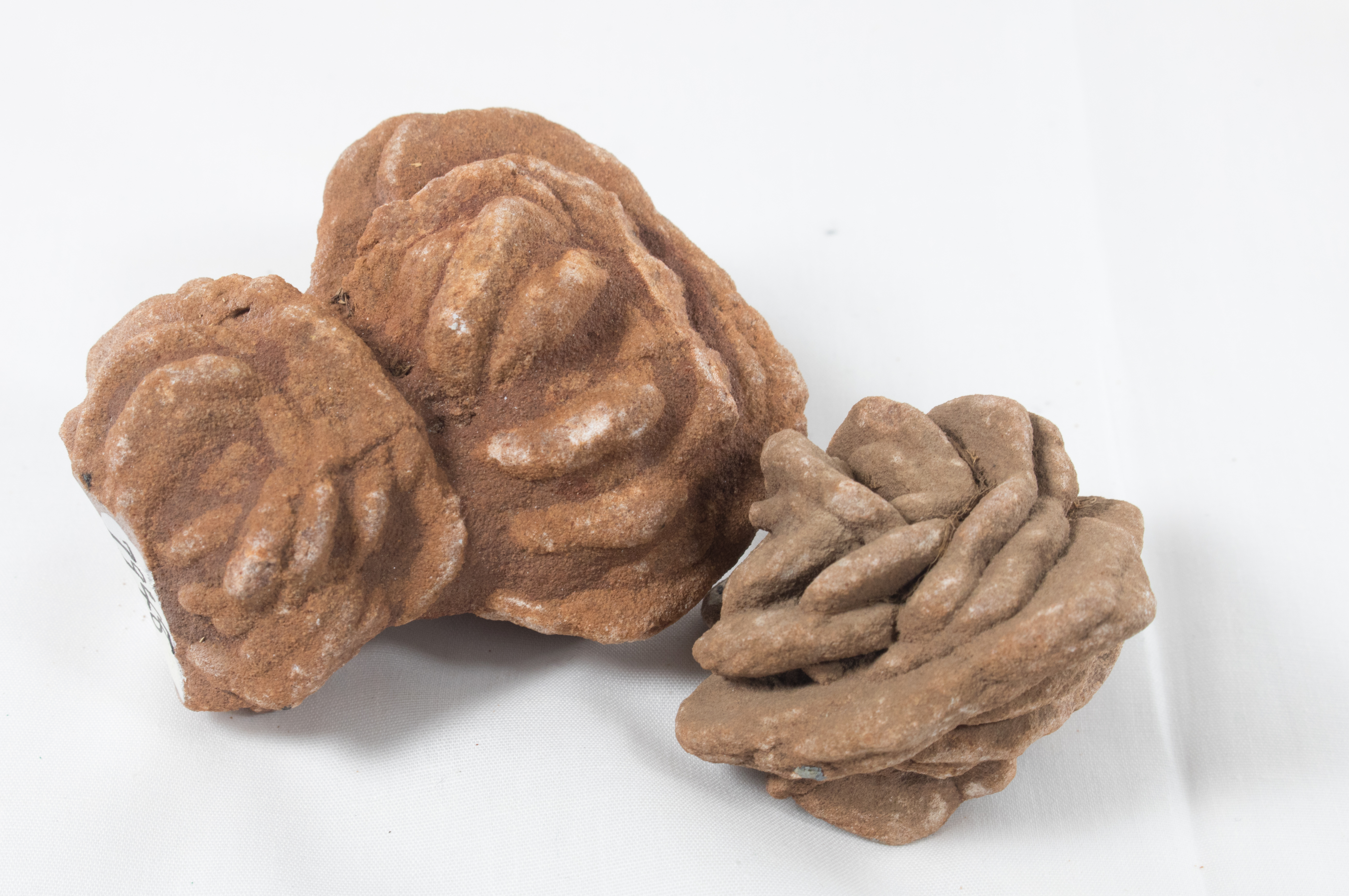Mineral Names
Group-level Naming
When mineralogists discover new minerals, they can name them after a variety of things including the new mineral’s chemical composition, a person, or a place. Mineral classifications are similar to animal classifications. For example, cats are a group within mammals and tigers are a species of cat. Just like the group “cats” includes multiple cat species, groups of minerals include multiple mineral species. Here are some examples of mineral groups.
Group: Zeolites
Zeolites are a group of silicates that have a porous mineral structure, which allows water molecules to attach to the surface. Their generalized chemical formula is M2/nOAl2O3⋅xSiO2⋅yH2O. In 1756, the founder of modern mineralogy Axel Fredrik Cronstedt of Sweden discovered the zeolite mineral stilbite. In order to understand the physical properties of stilbite, Cronstedt rapidly heated the mineral and observed that the surface appeared to “boil” due to steam releasing from the pores. This observation led Cronstedt to categorize stilbite, and other minerals like it, into a group he coined “zeolite”, which comes from the Greek words “zéō” meaning “to boil” and “líthos” meaning “stone”.
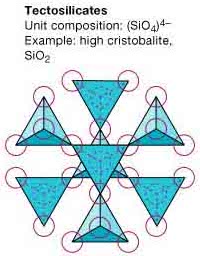
This structure is referred to as a framework structure.
Image modified from Silicate_structure_
Encyclopedia_Britannica
https://kids.britannica.com/students/assembly/view/2492
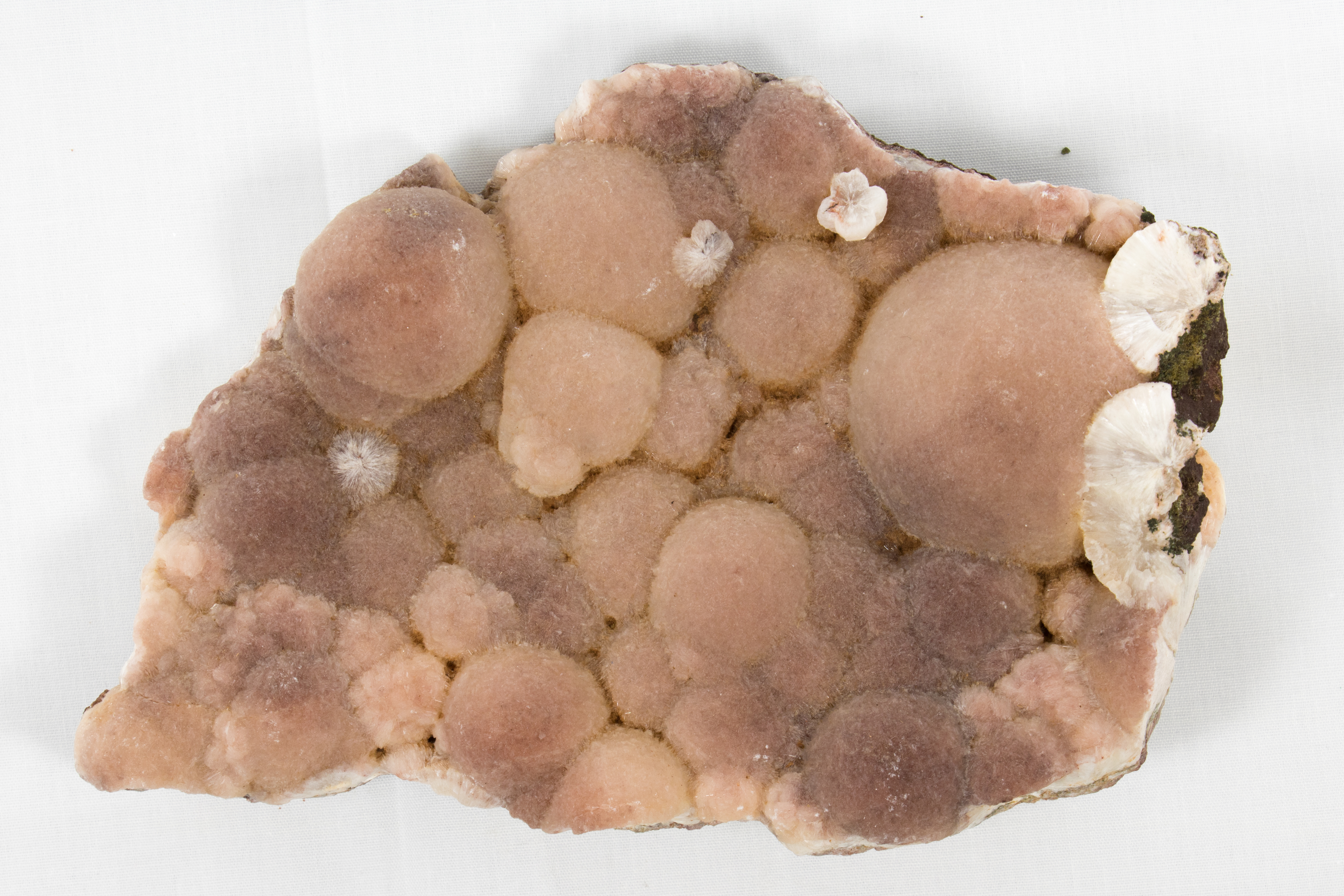
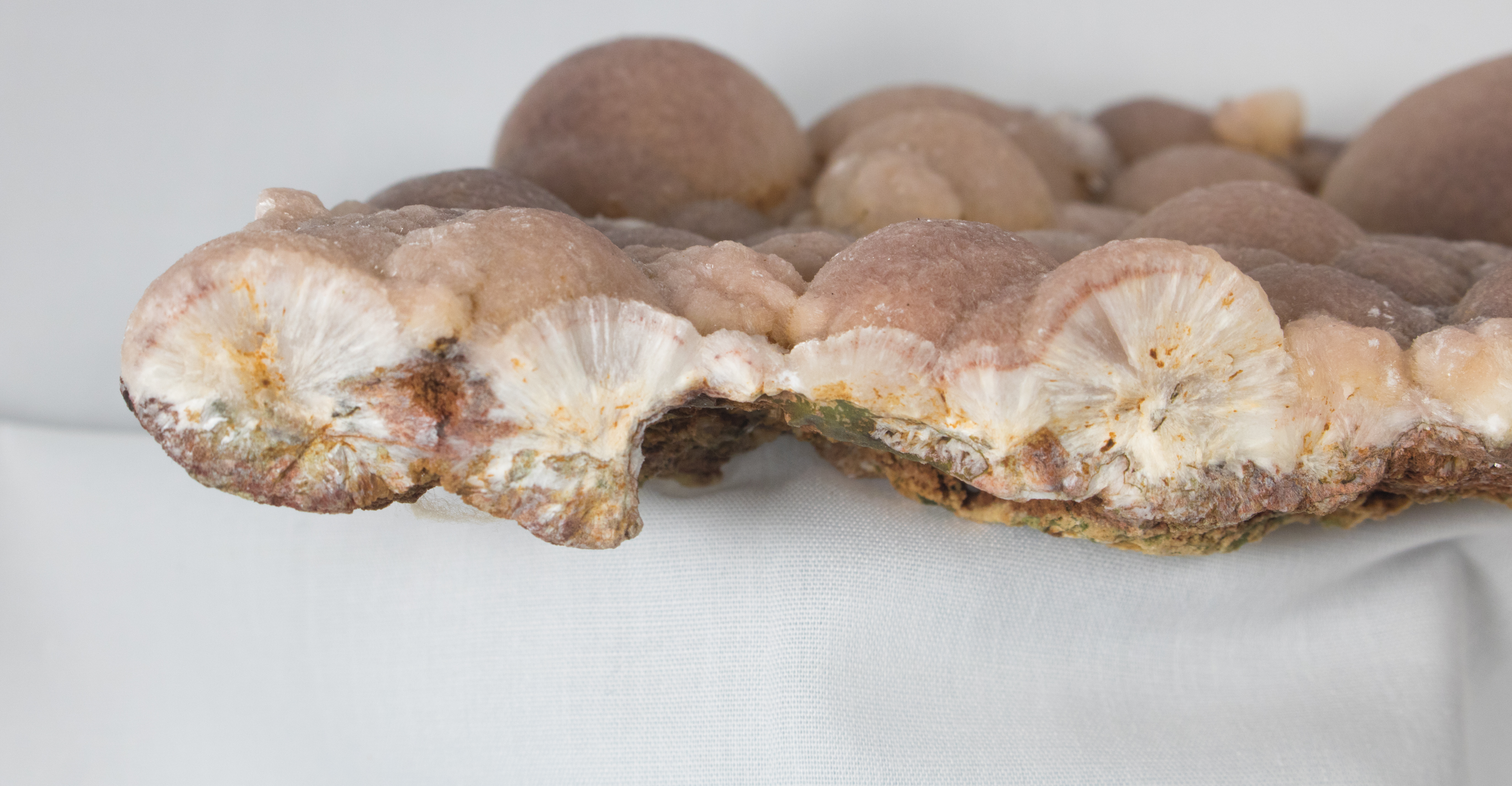
Group: Apophyllites
Like zeolites, apophyllites release water when heated. However, apophyllites do not “boil” from water within their pores. Instead, the water released from apophyllites comes from the mineral’s composition. The generalized chemical formula for apophyllites is (K,Na)Ca4Si8O,20(F,OH)·8H2O (note the water (H2O) in the chemical formula). Apophyllite is a member of the Phyllosilicates, a group of silicates characterized by their sheet-like crystal structure. Apophyllite comes from the Greek “phullon” meaning “leaf” and refers to the mineral’s tendency to flake apart when heated.
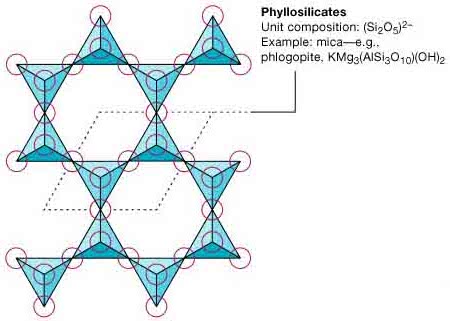
Crystal structure of phyllosilicate minerals.
These minerals have a sheet-like crystal structure.
Image modified from Silicate_structure_Encyclopedia_Britannica
https://kids.britannica.com/students/assembly/view/2492
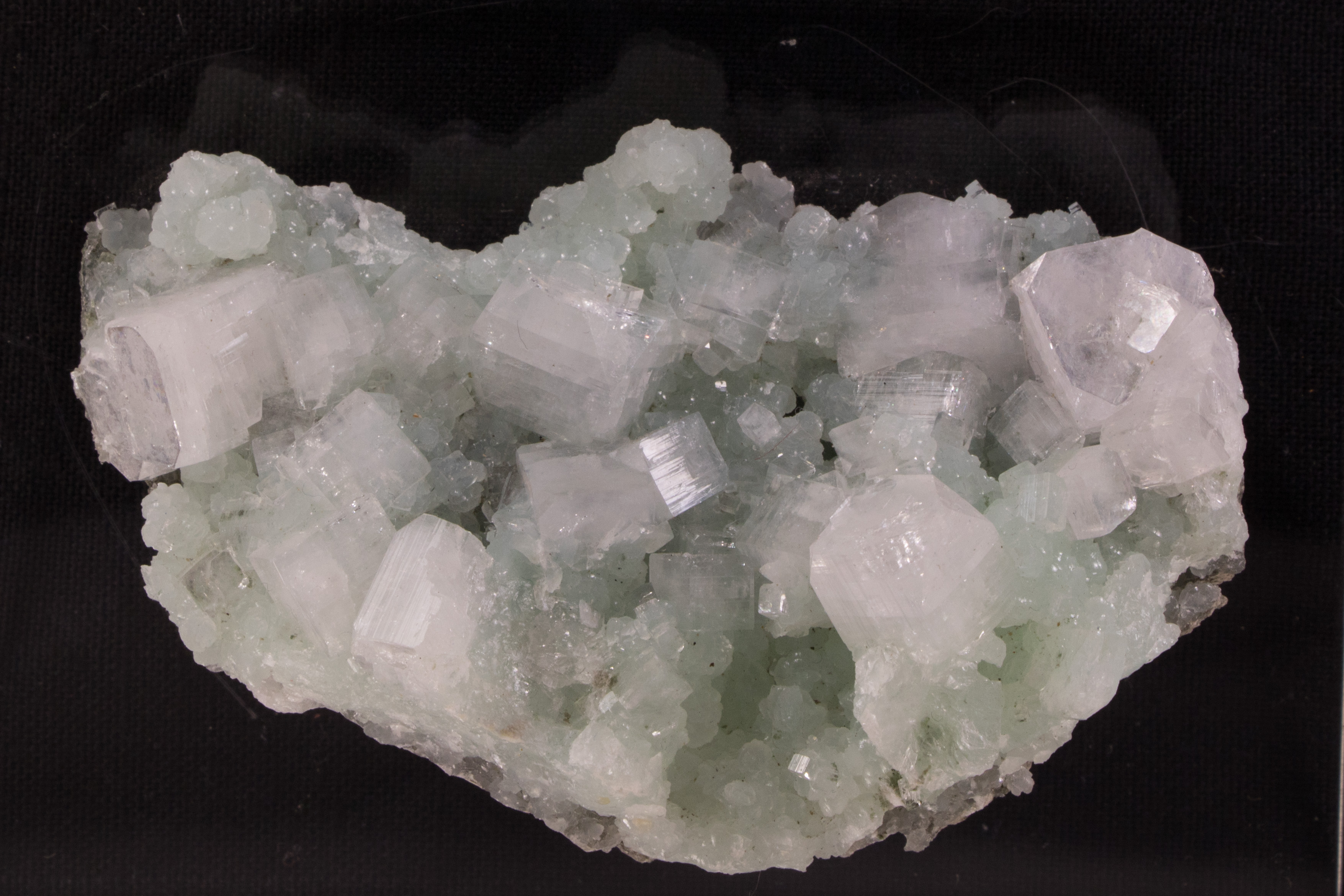
Groups: Vanadates
Minerals are primarily classified based on chemical composition. Vanadate minerals contain the chemical compound VO4 (elements: vanadium and oxygen). The name Vanadinite refers to its vanadium content. Vanadinite is an important ore of vanadium and a minor ore of lead where it occurs with more abundant lead minerals. Its distinctive color makes it a very popular mineral among collectors.
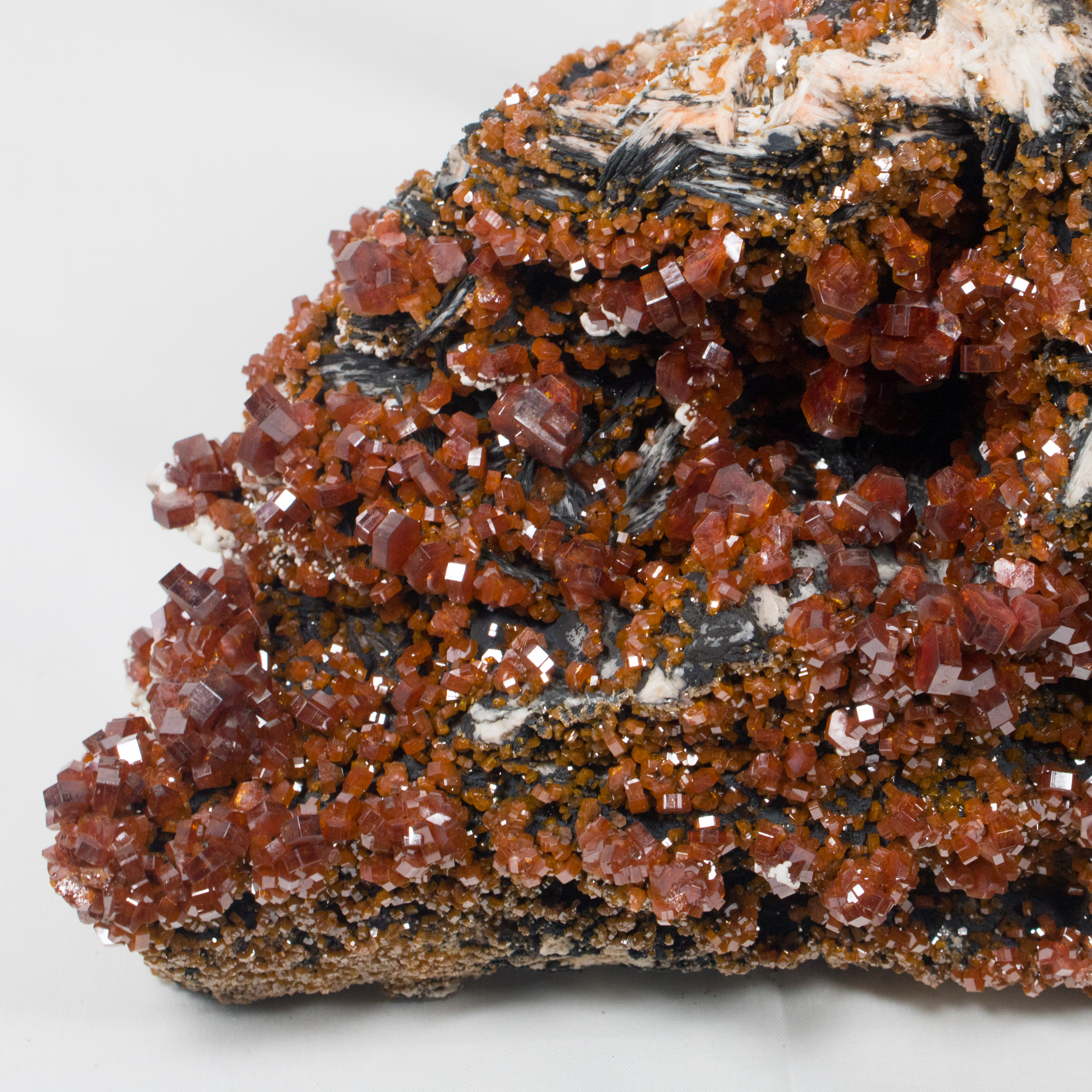
Species-level Naming
Mineral groups are made of mineral species. These mineral species are typically named for chemical composition, a person, or a place. Here are some examples of mineral species.
Species: Wavellite
Chemical formula: Al3(PO4)2(OH,F)3·5H2O
Wavellite is a phosphate mineral that was named in 1805 after William Wavell, an English physician who first discovered this mineral in Devon, England. Wavellite often forms green ball-shaped clusters of sphere-like masses.
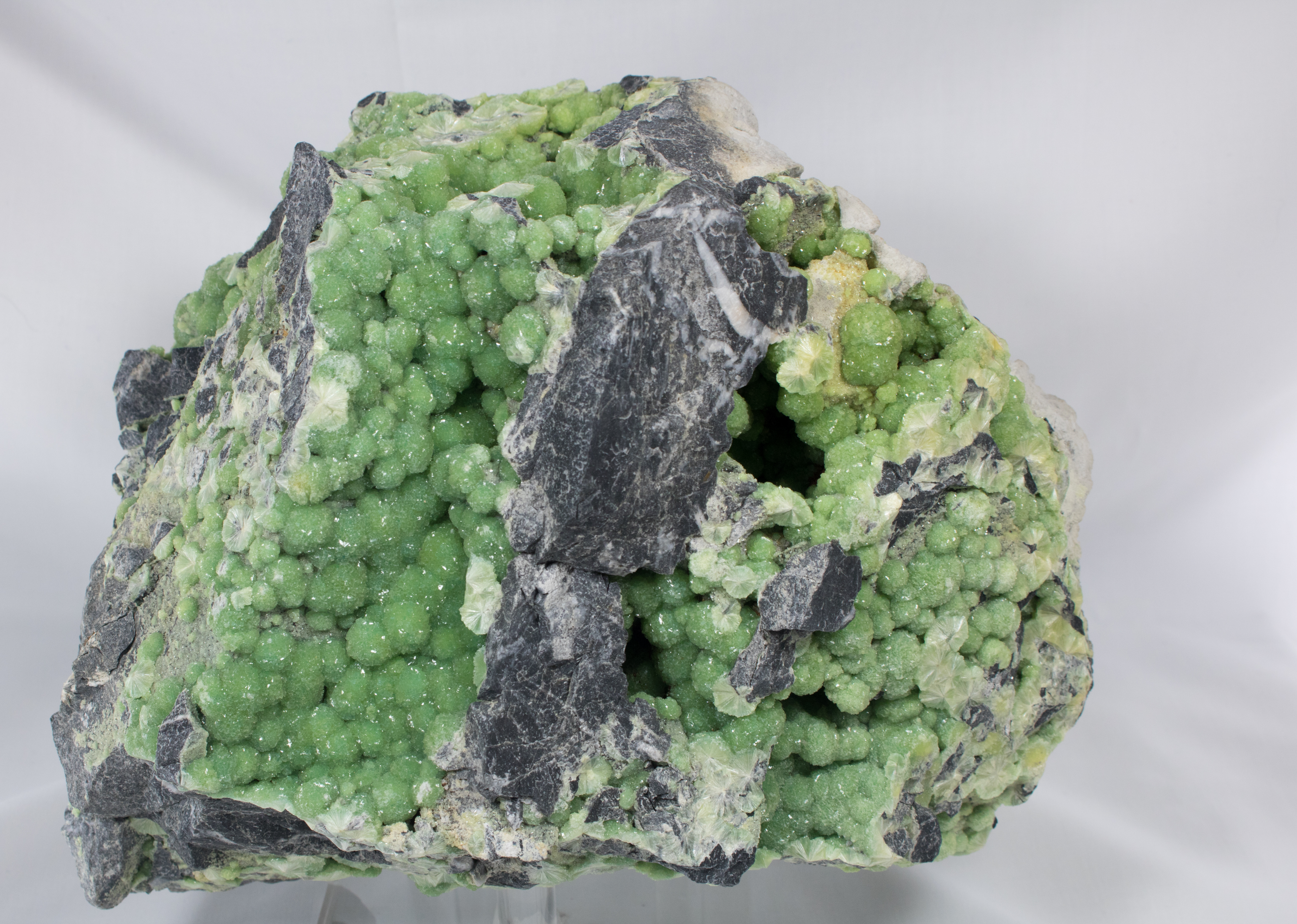
Species: Muscovite
Chemical formula: KAl2(AlSi3O10)(F,OH)2
Muscovite is a phyllosilicate mineral, also known as mica, that is recognizable by its platy habit and perfect cleavage. Historically, muscovite and other micas have been used as in peepholes and antique stoves because it was less likely to shatter when exposed to extreme temperature gradients than glass. In Elizabethan, England muscovite was called Muscovy-glass due to its use as glass in Medieval Russia (Muscovy).
Species: Kyanite
Chemical formula: Al2SiO5
Kyanite is a blue aluminosilicate mineral. One important identifying characteristic of kyanite is anisotropy, which means that the mineral’s hardness varies depending on the direction of the crystal. When kyanite is scratched parallel to the long axis of the crystal the hardness is ~4.5 but when scratched perpendicular to the long axis of the crystal the hardness is ~6.5. The name Kyanite comes from the Greek word “kyanos” which means dark blue.
Species: Barite
Chemical formula: BaSO4
Barite is a sulfate mineral in the barium group. Barite has multiple forms including large tabular crystals, rose-like aggregates, or divergent crystal clusters called “crested barite”. The name barite comes from the Greek word “barus” which means heavy.
